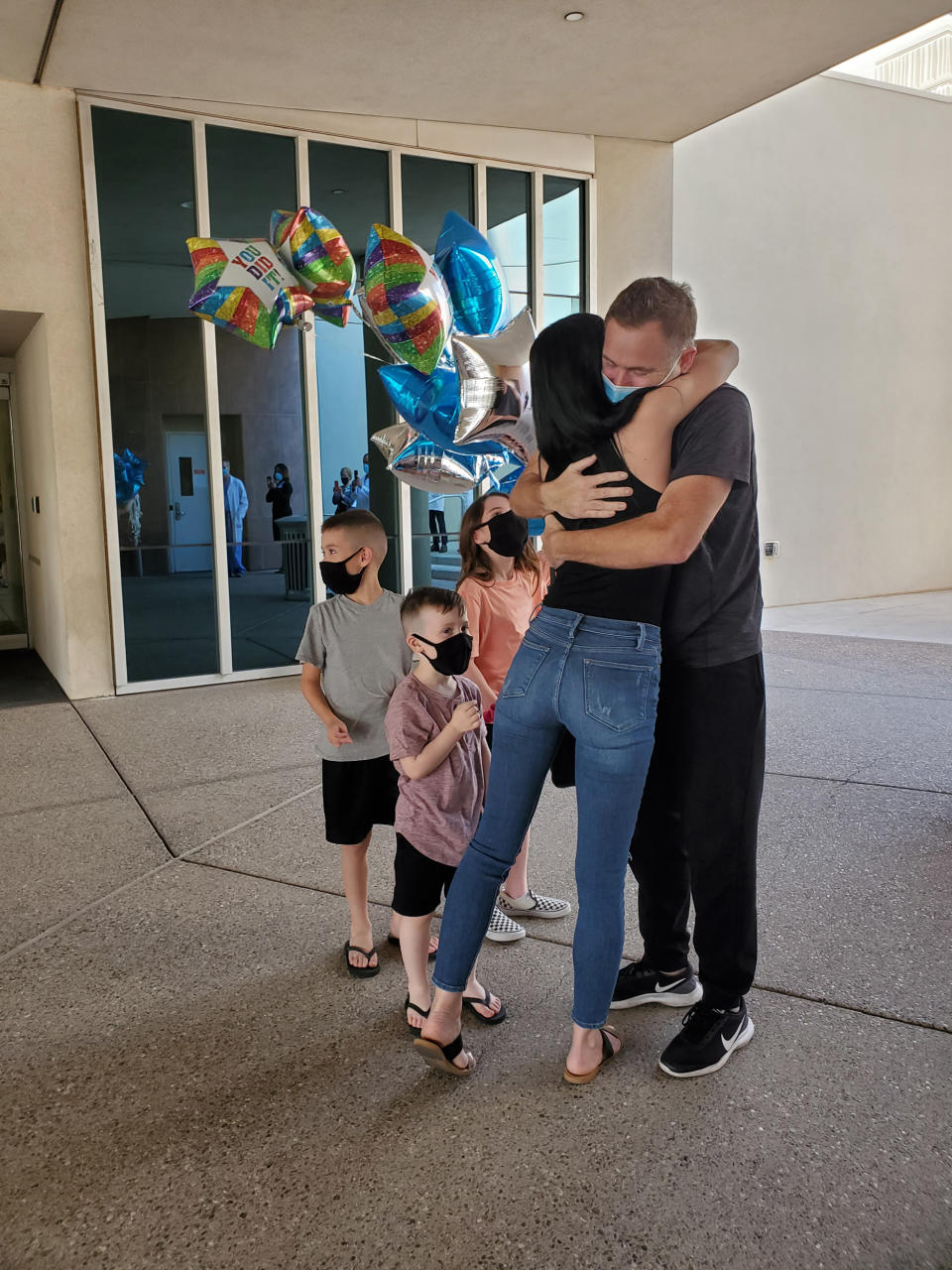A 46-year-old doctor who was critically ill made startling recovery
A 46-year-old physician in Arizona with no prior health issues contracted the coronavirus and was so ill that his doctors feared he would die. But Karl Viddal ended his nearly two-month hospital stay on Friday after being put on a life-support machine that is not widely available.
His treatment illustrates how hospitals around the country are using a variety of methods to treat severely ill COVID-19 patients.
The Phoenix-area physician came down with flu-like symptoms soon after returning from a trip abroad in March, according to an account of his illness and recovery by the Dignity Health hospital system. As he began to feel worse and had trouble breathing, the father of three young children was admitted to a hospital in Gilbert, Arizona, on March 22.
That began a fight for his life that included 28 days in a medically induced coma, 34 days on a ventilator and a total of 55 days in the hospital. The disease caused a life-threatening pneumonia.
Viddal's condition steadily worsened, and he had to go on a ventilator at Dignity Health Mercy Gilbert Medical Center to keep him alive. With options dwindling and his doctors fearing he may not survive, Viddal was moved to another hospital, Dignity Health St. Joseph’s Hospital and Medical Center, to try a measure of last resort.
Full coverage of the coronavirus outbreak
The treatment, known as extracorporeal membrane oxygenation or ECMO, is a form of life support that essentially takes the place of the heart and lungs, according to the American Thoracic Society. The machine connects to the veins and arteries in a patient's legs, neck or chest via a series of plastic tubes. The person's blood then flows through the ECMO system, which adds oxygen and removes carbon dioxide, before returning to the person's body.
The machine is only used after a person has been on a ventilator, and it carries a risk of kidney failure, stroke, internal bleeding or other life-threatening conditions. But it essentially gives a patient's organs and the rest of their body a break when they suffer respiratory distress.
Instead of a ventilator forcing as much oxygen into a person's body as possible, the ECMO machine does the entirety of the gas exchange and brings oxygenated blood to all of the patient's organs, according to Extracorporeal Life Support Organization, a nonprofit consortium of health care groups that evaluates therapies for failing organ systems.
Only a limited number of hospitals have an ECMO program. Viddal was the 32nd patient in the United States and the second in Arizona to be placed on this type of therapy for COVID-19, according to Dignity Health.
Medical experts, however, emphasize that the life support system is not a cure for the virus and far from a sure thing.

Of the 192 coronavirus patients in North America who have been put on an ECMO machine and then removed from it, 99 or 51 percent survived, according to the Extracorporeal Life Support Organization.
"Last-ditch effort is how you would typically use this, especially for adults," said Christine Stead, the interim CEO of the organization. "We’ll see how this plays out. Everyone is studying this thoroughly. We’ll see if it should be last ditch or if you start recommending people go on it earlier for better outcomes."
Stead's organization is now working on a study to examine the system's effectiveness in treating patients with COVID-19, with data help from Amazon and IBM.
The medical director of the ECMO program at St. Joseph's said it's a highly specialized treatment that is only used after all other conventional treatments fail. In Viddal's case, it allowed doctors to give his lungs a rest.
Viddal also didn't only undergo ECMO. His doctors put him through multiple other prolonged treatments. He may be one of the most critically-ill patients in the U.S. to recover from COVID-19, the hospital system said.
Like other patients who have been on such life-support systems, Viddal underwent therapy for rehabilitation after he was off the machines.
On Friday, he had enough strength and balance to walk again and to return home.
“It was hard comprehending what happened to me when I became conscious. I woke up and I was paralyzed, unable to speak,” Viddal said. "This virus nearly ended my life.”

